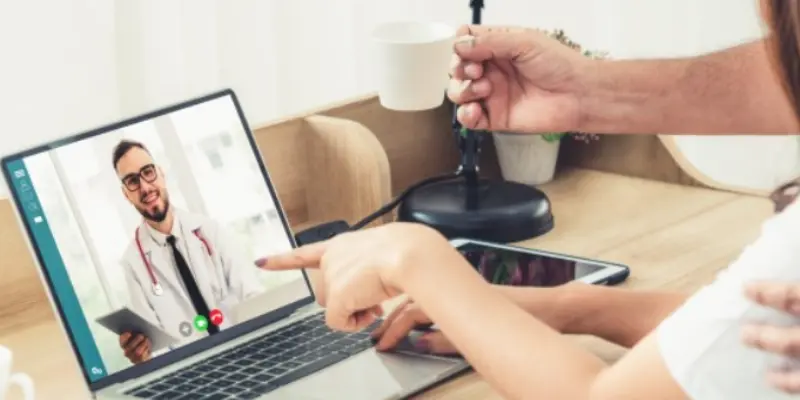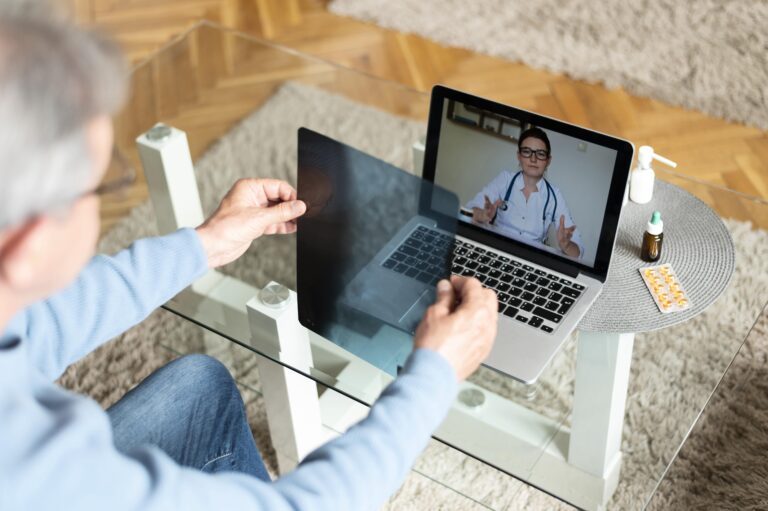Tips for a Successful Telehealth Visit
During the COVID-19 pandemic, the centers for Medicare and Medicaid Services and state agencies encouraged the use of telehealth services to maintain social distancing practices. Telehealth can either be a telephone call or a video conference between patients and their healthcare providers. FaceTime, Skype, WhatsApp, and many other apps are ways we communicate with our family and friends electronically.
We love the convenience of seeing loved ones from the comfort of our own homes. We love the opportunity to see loved ones who can live in another country. Telemedicine offers convenience and access to your appointment through telehealth software with your allergist or immunologist because it is essential during a COVID-19 pandemic.
Tips for Making Your Telehealth Visit Successful

Here are some tips for taking your telemedicine video visit successful and less stressful.
1. Find a quiet spot for a Telehealth Appointment
Direct contact is very important when you are in front of a patient. The most important thing you can do is to avoid noisy rooms so you are your patient can hear each other with concentration. you need to inform all your staff not to interrupt you while you are on a telehealth call. You may want to use earbuds or headphones during your call or video conference to help minimize outside noise.
2. Use high-quality Webcam
You need to use a good camera if you want to replicate the feeling of in-person interaction. Patients who can see your face clearly will feel more comfortable with the interaction and will respond more positively. You will make sure that your patient uses a webcam that is also adequate, make sure that patients are reminded before a visit to test the visual quality of their webcams and recommend alternatives if they need one.
3. Use quality sound equipment
When it comes to making a telehealth visit go smoothly, a direct connection is extremely important instead of only depending on the integrated equipment of your computer or smartphone opt for the professional; headset or microphone. These are not only super affordable at your local electronics store or online but they can guarantee that you are understood clearly and accurately by your patients without any problems. Telehealth services are about direct communication and failure to do so will lead to dissatisfied patients.
4. Offer multiple platforms
To ensure that the patient gets the most out of the telehealth visit, technology is frequently the main problem.it is therefore important to provide multiple platform choices to make it simpler for everyone to communicate securely and privately. For apple users or others who are older, FaceTime is often simpler, although Zoom is more commonly assessable for those with a computer or smartphone. Find a couple that fits well with your patients and fulfills the requirements of your clinic.
5. Ensure that the internet connection is secure
There is nothing worse than being halfway through the patient health appointment, and your internet connection loses all your oomph. Instead, it is important to make sure you have a secure link before you start a video conference.in most cases, this means making sure to have a wired connection i.e. one that goes directly from the device to the router without using the Wi-Fi. This not only speeds up your connectivity but also helps avoid lags and outages when you need it to function. If this is not a choice make sure your internet office is as fast as the service provider offers.
6. Write down relevant issues or questions
Keep a pen and paper ready and address questions or concerns you have before your telehealth appointment. It is also helpful to take notes from your meeting to help you remember the key points in the next visit of the patient.
7. Stay engaged with your patient
When you start offering telehealth visits for the first time, it may seem a little uncomfortable to talk to a technical device instead of a patient. Instead, make sure you get out of your way to remain involved during a visit. Make eye contact with the patient to indicate you listen to what they say while they are sharing their problems with you. If you need to take notes while the patient talks, let them know you are doing this to make sure you are documenting the visit properly. The biggest difference here is that you are going to ask more questions, so you cannot depend on just what your eyes see when it comes to diagnosis.
8. Explain the next steps thoroughly
When you are not seeing patients in person, it’s extremely important to interact thoroughly. Make sure you clarify all the next steps and answer any questions the patient may have. If possible, give them access to send questions via email or text message to you after a telehealth visit is over to help relieve anxiety and encourage them to feel connected.
9. Follow all telehealth guidelines
Of course, you need to be paid for your time and effort when it comes to telehealth appointments. As a result of COVID-19, most insurance providers have relaxed their provider requirements. but that does not mean that there are not certain things that you and your employee need to do and record to make sure you are paid on time and without any trouble.
Concluding Remarks
Whether you and your staff are not sure how to charge for telehealth visits or what the sessions cover? You should get in touch with our medical team to outsource medical billing of your telehealth services. We keep our staff up to date with the latest updates released by CMS or other government agencies.so you will get paid on time with slight rejections.



